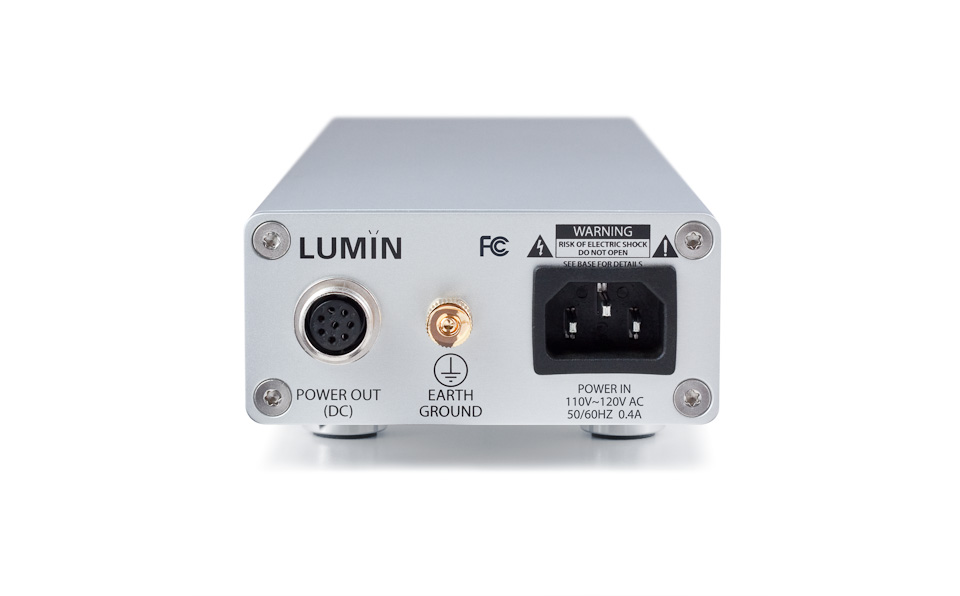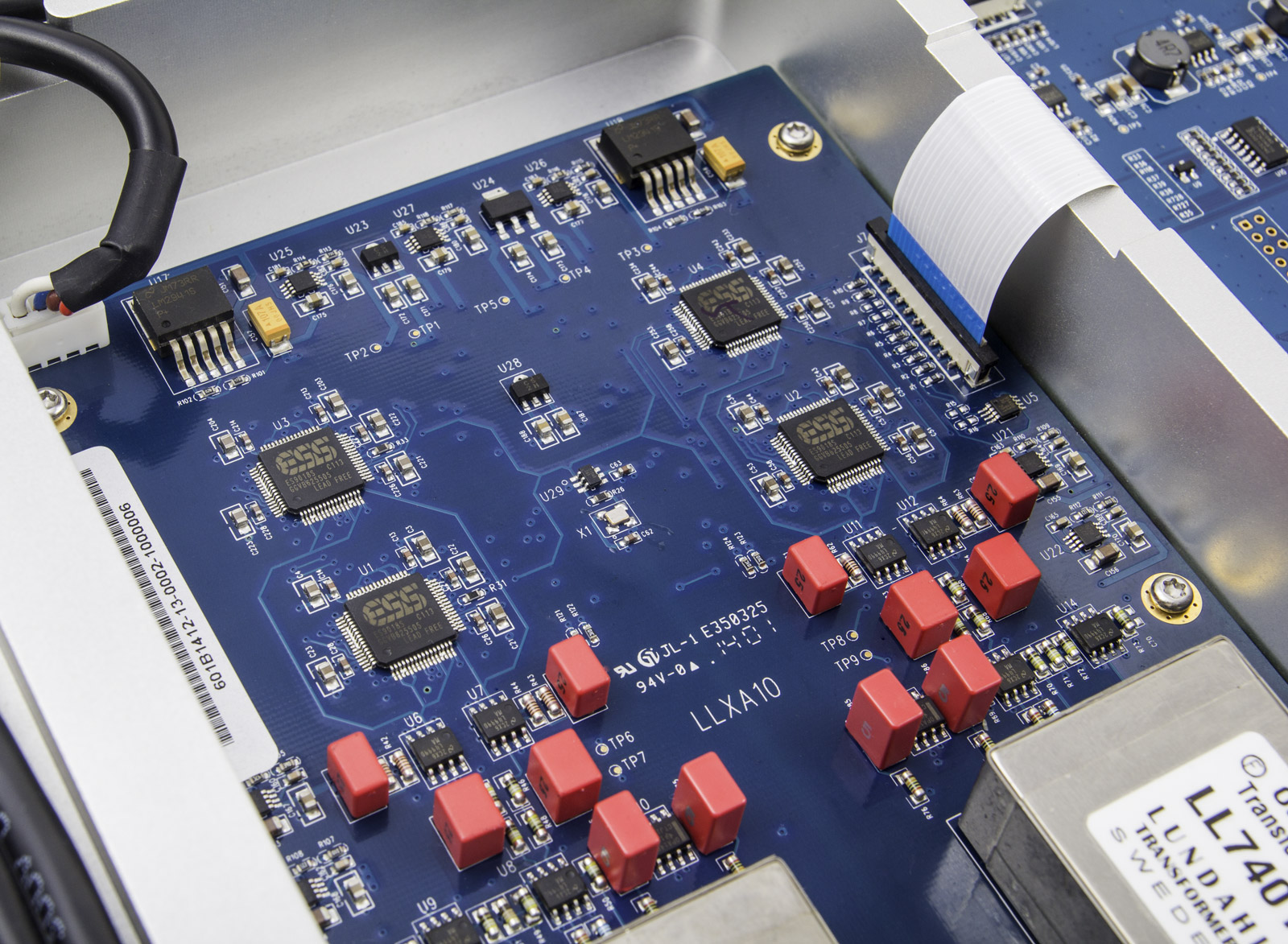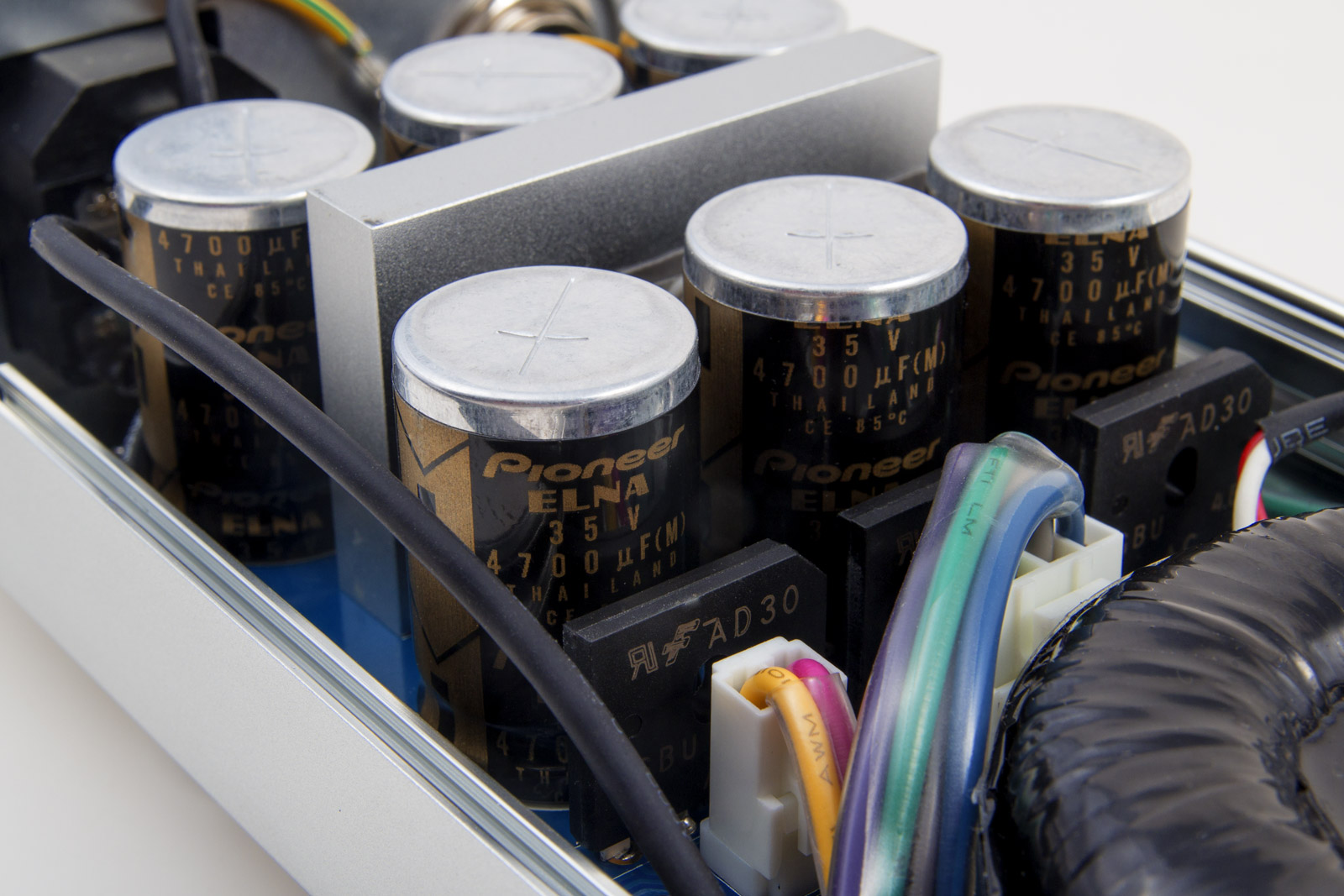- Thread Author
- #1
Lumin S1 Review

It was a mere 18 months following the launch of their first foray into high end audio that Pixel Magic Systems launched an entire line of products based on the concept of high end network music players. The Lumin lineup now includes the S1, A1, T1, L1. This is quite a feat considering this young company only dipped their toes into the market a short 18 months ago.
I’ve reviewed many digital products (DAC’s and the first Lumin Network Music Player, now renamed “A1”). I find writing reviews of digital sources akin to describing the color white to someone. Is it a bright white? Off-white? Something with a hint of yellow? White-white? What is it? I also find that ultimately finding the best digital source is very dependent on the rest of the system, including cabling and the room – more so than what some hopeless scribe thinks (myself included). You need to try different digital sources in your room, in your system, to really know.
In addition, us audiophiles (a demanding bunch by any measure) have come to expect that our digital sources will be accompanied by some sort of iPad/tablet control and I think our patience for third party products for this purpose is running out. It is expected that any high end audio company serious about their digital products will make their own slick looking, intuitive, user friendly app (free of course).
As I write this review, I’ve had the Lumin A1 in my system for the better part of 9 months and the S1 for more than 3 months. Other than the new Lumin S1, my interest in the latest flavor-of-the-month DAC has seriously waned. I wanted to live with both the A1 and S1 before writing this review. Out of the gate, it’s very easy to pick the new kid on the block to win the race. But living with a product for several months really gives you the kind of reference points to draw some conclusions.
Before I get into the Lumin S1, I want to address setup of any Lumin Network Music Player. In addition to getting asked many times how does the Lumin S1 compare to the A1, people are most confused about setting up a Lumin – and I don’t blame you. If you don’t walk around with a propeller on your head, a giant pocket protector and tape between your glasses, you will need a little patience. Set aside a Saturday or Sunday when you can really focus. Having a friend who is a “computer guy” come by to help won’t hurt either.
Now, despite me saying this, I’ve had many people tell me, “oh Mike, you made it sound a lot worse than it really was.” Well, that’s good. I don’t want to candy coat the initial setup. But if you READ the information in detail (I don’t mean skim reading…I mean…reading every word), then you will get through things.
Here is a little guide I’ve created: http://audioshark.org/lumin-169/setting-up-lumin-network-music-player-5693.html#post91944
From a technical standpoint, the Lumin S1 represents a nice leap forward. The S1 ("S" presumably stands for "Statement") uses four ESS Sabre 9018 eight channel DAC chips. This means that the S1 has 16 paralleled DAC’s for each channel. The A1 by comparison uses one Wolfson WM8741 DAC per channel. The S1 also has an updated clock system. The technical specs of which are far above my pay grade to understand.

In addition to new and multiple DAC chips, a new clock, the S1 also sports a new power supply. The S1 power supply is slightly longer than the A1 power supply. The S1 power supply has larger capacitors which, as I understand it, are required for the new multi channel DAC chips. That’s it….as far as I know. So, for those of you wanting the S1 power supply for your A1, my question would be, why? Sorry to be the bearer of bad news, but the S1 Power Supply won’t turn your A1 into an S1. If you want a different (improved?) sound out of your A1, try the Ken Lau after market power supply.


So, how does the S1 sound? If I own the A1, do I need to upgrade to the S1? Will the S1 power supply be available as a separate purchase for my A1? The answers are great, no and no.
I listened to the S1 on input 1 and the A1 on input 2 of my preamp for the better part of two months. Both exceed all previous DAC & Mac combinations I’ve had in my system prior – or since - and I’ve had some good ones. When the owner of the new PS Audio DirectStream DAC brought it over to compare…let’s just say he was the first to blurt out how much better the Lumin (A1) sounded. We never compared it to the S1. That would have not been fair. I’ve stated before my opinion of the limitations of DAC’s….and listening is all you need to do…..so no need to rehash all that.
Regardless of whether the A1 or S1 is to your liking, in my opinion, Network Music Players are the future of digital audio. We are starting to see more competition in the space that Linn pioneered. Speaking of Linn….they seem to be asleep at the wheel. I wonder how they feel about DSD now? But I digress….
Admittedly, I wasn’t expecting the S1 to be that different from the A1. But as I quickly found out, looks can be deceiving.
One of my favorite test albums is ‘We Get Requests’, Oscar Peterson Trio (DSD). I find the spacing on this world-class three piece jazz band to be a great test for any system. The believable dimensionality of the band is increased even more with the S1 over the A1. Everything is sharper, more focused with a greater sense of depth. The pluck of the standup bass is more believable.

Moving on to female vocals, I played Diana Krall, ‘A Dedication to the Nat King Cole Trio (redbook rip)’. Listening to the song, Boulevard of Broken Dreams on the S1, it was clear immediately that the enhanced sweetness of female vocals that the S1 projects over the A1 or any other digital source I’ve owned. Diana’s vocals had a tonal hue that was rich and sweet sounding. On my Oppo for example, this same track sounded quite dry and flat.

Next, I moved on to Hugh Masekela, Hope (DSD). This is a great album – period – but also a great album to test bass control. Over the last few months, this is probably one of the most noticeable improvements of the S1 over the A1. Bass is tight, fast and punchy. Percussionist Remi Kabaka’s playing is tight and sharp. The S1 exhibits more solid state like bass control, while the A1 has bass control more similar to what you would hear with a good tube amp. Warmer midbass at the expense of a little control. And as I’ve said, that works well for some people, in some systems.

Up next was Natalie Merchant’s self-entitled new album. Downloaded from HDTracks, this strange bird has a sample rate of 88/24. Hmm...a little odd, well, OK…so be it. The album is fantastic by the way. Highly recommended. One of my favorite tracks on the album is Maggie Said. The intro is Natalie’s gorgeous voice and a solo acoustic guitar. The spacing advantage of the S1 really shines here. But switching to the A1, there is no doubt that the A1 exhibits more a of a “analog” softness to the track, and this softness can be beneficial on less than stellar recordings.

Up next from the same Natalie Merchant album was the track Giving Up Everything. The intro is a great test for bass definition and control and once again the S1 showed its stripes.

I would remiss if I didn’t at least mention the S1’s capabilities for Double DSD. To test the Double DSD capabilities of the S1, I downloaded Opus 3 and Keith Greeninger Special Event 20. The selection of Double DSD recorded albums remains miniscule at best. But, it was at least fun to try. Was it better than regular DSD? Sure, maybe, who knows? Even comparing the same Opus 3 album in DSD to it in Double DSD demonstrated some small degree of improvement. But with Double DSD albums remaining very low, I wouldn’t lose any sleep over it just yet.


I’ve been trying to think of an analogy to come up with to compare the S1 to A1. The best way to describe the differences sonically is that the A1 is the equivalent of 1080p video. Excellent by any measure and only bettered today by 4K. 4K is sharper, more detailed, more colorful. The same goes for the S1. Imaging is sharper. Voices are more sweet. Just like the fine pixels on a 4K screen, there is more space around the instruments too. I would sum it up this way, the A1 is warmer, more analog sounding. The S1 is sweeter, sharper. But at the end of the day, both are exceedingly musical.
Which you chose will ultimately depend on your budget (the S1 is $5,300 more than the A1) and what your system needs in terms of a source (warm/analog) or sweet and focused musical representation. I prefer the S1 on my Alexia’s and now Sonus Faber Stradivari’s in my reference system and the A1 on my Tannoy Canterbury GR’s in my second system.


It was a mere 18 months following the launch of their first foray into high end audio that Pixel Magic Systems launched an entire line of products based on the concept of high end network music players. The Lumin lineup now includes the S1, A1, T1, L1. This is quite a feat considering this young company only dipped their toes into the market a short 18 months ago.
I’ve reviewed many digital products (DAC’s and the first Lumin Network Music Player, now renamed “A1”). I find writing reviews of digital sources akin to describing the color white to someone. Is it a bright white? Off-white? Something with a hint of yellow? White-white? What is it? I also find that ultimately finding the best digital source is very dependent on the rest of the system, including cabling and the room – more so than what some hopeless scribe thinks (myself included). You need to try different digital sources in your room, in your system, to really know.
In addition, us audiophiles (a demanding bunch by any measure) have come to expect that our digital sources will be accompanied by some sort of iPad/tablet control and I think our patience for third party products for this purpose is running out. It is expected that any high end audio company serious about their digital products will make their own slick looking, intuitive, user friendly app (free of course).
As I write this review, I’ve had the Lumin A1 in my system for the better part of 9 months and the S1 for more than 3 months. Other than the new Lumin S1, my interest in the latest flavor-of-the-month DAC has seriously waned. I wanted to live with both the A1 and S1 before writing this review. Out of the gate, it’s very easy to pick the new kid on the block to win the race. But living with a product for several months really gives you the kind of reference points to draw some conclusions.
Before I get into the Lumin S1, I want to address setup of any Lumin Network Music Player. In addition to getting asked many times how does the Lumin S1 compare to the A1, people are most confused about setting up a Lumin – and I don’t blame you. If you don’t walk around with a propeller on your head, a giant pocket protector and tape between your glasses, you will need a little patience. Set aside a Saturday or Sunday when you can really focus. Having a friend who is a “computer guy” come by to help won’t hurt either.
Now, despite me saying this, I’ve had many people tell me, “oh Mike, you made it sound a lot worse than it really was.” Well, that’s good. I don’t want to candy coat the initial setup. But if you READ the information in detail (I don’t mean skim reading…I mean…reading every word), then you will get through things.
Here is a little guide I’ve created: http://audioshark.org/lumin-169/setting-up-lumin-network-music-player-5693.html#post91944
From a technical standpoint, the Lumin S1 represents a nice leap forward. The S1 ("S" presumably stands for "Statement") uses four ESS Sabre 9018 eight channel DAC chips. This means that the S1 has 16 paralleled DAC’s for each channel. The A1 by comparison uses one Wolfson WM8741 DAC per channel. The S1 also has an updated clock system. The technical specs of which are far above my pay grade to understand.

In addition to new and multiple DAC chips, a new clock, the S1 also sports a new power supply. The S1 power supply is slightly longer than the A1 power supply. The S1 power supply has larger capacitors which, as I understand it, are required for the new multi channel DAC chips. That’s it….as far as I know. So, for those of you wanting the S1 power supply for your A1, my question would be, why? Sorry to be the bearer of bad news, but the S1 Power Supply won’t turn your A1 into an S1. If you want a different (improved?) sound out of your A1, try the Ken Lau after market power supply.


So, how does the S1 sound? If I own the A1, do I need to upgrade to the S1? Will the S1 power supply be available as a separate purchase for my A1? The answers are great, no and no.
I listened to the S1 on input 1 and the A1 on input 2 of my preamp for the better part of two months. Both exceed all previous DAC & Mac combinations I’ve had in my system prior – or since - and I’ve had some good ones. When the owner of the new PS Audio DirectStream DAC brought it over to compare…let’s just say he was the first to blurt out how much better the Lumin (A1) sounded. We never compared it to the S1. That would have not been fair. I’ve stated before my opinion of the limitations of DAC’s….and listening is all you need to do…..so no need to rehash all that.
Regardless of whether the A1 or S1 is to your liking, in my opinion, Network Music Players are the future of digital audio. We are starting to see more competition in the space that Linn pioneered. Speaking of Linn….they seem to be asleep at the wheel. I wonder how they feel about DSD now? But I digress….
Admittedly, I wasn’t expecting the S1 to be that different from the A1. But as I quickly found out, looks can be deceiving.
One of my favorite test albums is ‘We Get Requests’, Oscar Peterson Trio (DSD). I find the spacing on this world-class three piece jazz band to be a great test for any system. The believable dimensionality of the band is increased even more with the S1 over the A1. Everything is sharper, more focused with a greater sense of depth. The pluck of the standup bass is more believable.

Moving on to female vocals, I played Diana Krall, ‘A Dedication to the Nat King Cole Trio (redbook rip)’. Listening to the song, Boulevard of Broken Dreams on the S1, it was clear immediately that the enhanced sweetness of female vocals that the S1 projects over the A1 or any other digital source I’ve owned. Diana’s vocals had a tonal hue that was rich and sweet sounding. On my Oppo for example, this same track sounded quite dry and flat.

Next, I moved on to Hugh Masekela, Hope (DSD). This is a great album – period – but also a great album to test bass control. Over the last few months, this is probably one of the most noticeable improvements of the S1 over the A1. Bass is tight, fast and punchy. Percussionist Remi Kabaka’s playing is tight and sharp. The S1 exhibits more solid state like bass control, while the A1 has bass control more similar to what you would hear with a good tube amp. Warmer midbass at the expense of a little control. And as I’ve said, that works well for some people, in some systems.

Up next was Natalie Merchant’s self-entitled new album. Downloaded from HDTracks, this strange bird has a sample rate of 88/24. Hmm...a little odd, well, OK…so be it. The album is fantastic by the way. Highly recommended. One of my favorite tracks on the album is Maggie Said. The intro is Natalie’s gorgeous voice and a solo acoustic guitar. The spacing advantage of the S1 really shines here. But switching to the A1, there is no doubt that the A1 exhibits more a of a “analog” softness to the track, and this softness can be beneficial on less than stellar recordings.

Up next from the same Natalie Merchant album was the track Giving Up Everything. The intro is a great test for bass definition and control and once again the S1 showed its stripes.

I would remiss if I didn’t at least mention the S1’s capabilities for Double DSD. To test the Double DSD capabilities of the S1, I downloaded Opus 3 and Keith Greeninger Special Event 20. The selection of Double DSD recorded albums remains miniscule at best. But, it was at least fun to try. Was it better than regular DSD? Sure, maybe, who knows? Even comparing the same Opus 3 album in DSD to it in Double DSD demonstrated some small degree of improvement. But with Double DSD albums remaining very low, I wouldn’t lose any sleep over it just yet.


I’ve been trying to think of an analogy to come up with to compare the S1 to A1. The best way to describe the differences sonically is that the A1 is the equivalent of 1080p video. Excellent by any measure and only bettered today by 4K. 4K is sharper, more detailed, more colorful. The same goes for the S1. Imaging is sharper. Voices are more sweet. Just like the fine pixels on a 4K screen, there is more space around the instruments too. I would sum it up this way, the A1 is warmer, more analog sounding. The S1 is sweeter, sharper. But at the end of the day, both are exceedingly musical.
Which you chose will ultimately depend on your budget (the S1 is $5,300 more than the A1) and what your system needs in terms of a source (warm/analog) or sweet and focused musical representation. I prefer the S1 on my Alexia’s and now Sonus Faber Stradivari’s in my reference system and the A1 on my Tannoy Canterbury GR’s in my second system.

